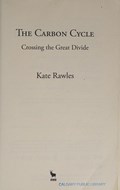Narrow Results By
Booming and blooming in Waterton
https://archives.whyte.org/en/permalink/catalogue15397
- Medium
- Library - Periodical
- Published Date
- 2017
- Author
- England, Sky
- Publisher
- In Canadian Rockies Annual, vol.01, 2017
- Call Number
- P
- Author
- England, Sky
- Publisher
- In Canadian Rockies Annual, vol.01, 2017
- Published Date
- 2017
- Physical Description
- p.28-29
- Medium
- Library - Periodical
- Call Number
- P
- Collection
- Archives Library
This material is presented as originally created; it may contain outdated cultural descriptions and
potentially offensive content.
Read more.
Brushes with climate change - Rockies Repeat project explores the intersection between conservation, art, history, and culture
https://archives.whyte.org/en/permalink/catalogue25227
- Medium
- Library - Periodical
- Published Date
- 2020
- Author
- Campbell, Brooke
- Call Number
- P
1 website
- Author
- Campbell, Brooke
- Responsibility
- Brooke Campbell
- Published Date
- 2020
- Physical Description
- p. 12 - 13
- Medium
- Library - Periodical
- Abstract
- Pertains to the Rockies Repeat Project which involves a group of women travelling to specific locations and re-creating the paintings of Peter Whyte and Catharine Robb Whyte with the end result of creating a documentary, exhibition and digital storytelling capsule
- Notes
- In Canada's History, Vol. 101, No.2 (April-May)
- Call Number
- P
- Collection
- Archives Library
- URL Notes
- Available online
Websites
This material is presented as originally created; it may contain outdated cultural descriptions and
potentially offensive content.
Read more.
Capturing glaciers : a history of repeat photography and global warming
https://archives.whyte.org/en/permalink/catalogue26254
- Medium
- Library - Book (including soft-cover and pamphlets)
- Published Date
- 2023
- Author
- Inkpen, Dani
- Publisher
- Seattle : University of Washington Press
- Call Number
- 04 In5c
- Author
- Inkpen, Dani
- Publisher
- Seattle : University of Washington Press
- Published Date
- 2023
- Physical Description
- In Capturing Glaciers, Dani Inkpen examines the many ways scientists have made and used photographs of receding glaciers and how the meanings and evidential value of such images evolved over time. This project sheds light on the challenges of conducting research about climate change, the challenges of enacting social change around environmental problems, and the ways that well-intentioned scientists can still replicate social inequalities"-- Provided by publisher.
- Subjects
- Glaciers
- glaciology
- Global warming
- Climate change
- Photography
- Repeat photography
- Environment
- Nature
- Abstract
- In Capturing Glaciers, Dani Inkpen examines the many ways scientists have made and used photographs of receding glaciers and how the meanings and evidential value of such images evolved over time. This project sheds light on the challenges of conducting research about climate change, the challenges of enacting social change around environmental problems, and the ways that well-intentioned scientists can still replicate social inequalities. -- Provided by publisher.
- Contents
- Introduction : thinking historically about photos of ice -- Documenting : glacier naturalism -- Transitions : the limits of photography -- Measuring : geophysical glaciology -- Monitoring : environmental glaciology -- Witnessing : the iconography of ice -- Conclusion : people and glaciers.
- Notes
- Whyte Museum collections utilized for research purposes and imagery.
- ISBN
- 9780295752020
- Accession Number
- 2024.27
- Call Number
- 04 In5c
- Collection
- Archives Library
This material is presented as originally created; it may contain outdated cultural descriptions and
potentially offensive content.
Read more.
The carbon cycle : crossing the Great Divide
https://archives.whyte.org/en/permalink/catalogue26209
- Medium
- Library - Book (including soft-cover and pamphlets)
- Published Date
- 2013
- Author
- Rawles, Kate
- Publisher
- Victoria, BC : Rocky Mountain Books
- Call Number
- 02.8 R21c
- Author
- Rawles, Kate
- Publisher
- Victoria, BC : Rocky Mountain Books
- Published Date
- 2013
- Physical Description
- 336 pages ; 15 cm
- Abstract
- In 2006 “outdoor philosopher” Kate Rawles cycled 4553 miles from Texas to Alaska, following the spine of the Rocky Mountains as closely as possible. Cycling across unforgiving but starkly beautiful landscapes in both the United States and Canada – deserts, high mountain passes, glaciers and eventually down to the sea – she encountered bears, wolves, moose, cliff-swallows, aspens and a single, astonishing lynx. Along the way, she talked to North Americans about climate change – from truck drivers to politicians – to find out what they knew about it, whether they cared, and if they did, what they thought they could do. Kate tells the story of a trip in which she has to deal with the rigours of cycling for ten hours a day in temperatures often in excess of 100° F, fighting punctures, endless repairs and inescapable, grinding fatigue … . But in recounting the physical struggle of such a journey, she also does constant battle with her own ideas and assumptions, helping us to cross the great divide between where we are on climate change and where we need to be. Can we tackle climate change while still keeping our modern Western lifestyles intact? Should we put biofuel in our camper vans and RVs? Or do we need much deeper shifts in lifestyles, values and worldviews? -- From publisher
- ISBN
- 9781927330777
- Accession Number
- P2023.25
- Call Number
- 02.8 R21c
- Collection
- Archives Library
This material is presented as originally created; it may contain outdated cultural descriptions and
potentially offensive content.
Read more.
Climate change and landscape in the Canadian Rocky Mountains
https://archives.whyte.org/en/permalink/catalogue25284
- Medium
- Library - Book (including soft-cover and pamphlets)
- Published Date
- 2006
- Author
- Rutter, Nat
- Coppold, Murray
- Rokosh, Dean
- Publisher
- Field, B.C. : Burgess Shale Geoscience Foundation
- Edition
- Revised Second Edition
- Call Number
- 03.2 R93c
- 03.2 R93c Reference copy
1 website
- Responsibility
- The Burgess Shale Geoscience Foundation
- Nat Rutter
- Murray Coppold
- Dean Rokosh
- Edition
- Revised Second Edition
- Publisher
- Field, B.C. : Burgess Shale Geoscience Foundation
- Published Date
- 2006
- Physical Description
- 137 pages : illustrations (chiefly color), maps, portraits
- Subjects
- Glaciers
- Climatology
- Climate change
- Environment
- Environmental conservation
- Geography
- Geology
- Abstract
- Climate change is at the forefront of public consciousness today. Political initiatives to combat the social and economic effects of changing climate will affect the lives of everyone. Media reports often portray climate scenarios and the range of uncertainty accompanying predictions. How does a reader approach the science behind the headlines? The goal of this book is to explain climate change science by examining the recent Ice Age history so spectacularly exposed in the Canadian Rocky Mountains landscape. Local and global sources of paleoclimate information are combined with dating techniques to unravel the glacial history of the Rockies over the last 30,000 years. The illustrated road log guide can be used by the armchair reader or the traveller to visit the landscape features essential to the interpretation. The Burgess Shale Geoscience Foundation is a non-profit charitable organization dedicated to increasing public understanding of the geosciences. Its teaching themes demonstrate the use of physics, biology, chemistry and mathematics in solving science questions and problems. The diverse program includes public lectures, teacher workshops, school programs and guided hikes. The Foundation conducts educational hikes to the Burgess Shale soft-bodied fossil deposit and the Mt. Stephen trilobite beds, both UNESCO World Heritage sites in Yoho National Park. (From Good Reads)
- Contents
- Introduction -- Archives of Climate Change -- Dating the Archives -- Extracting Climate Information -- Interpreting the Last Ice Age -- Finding Climate Change in the Rockies -- Glaciation in the Banff-Jasper Area -- Road Log Guide to Landscape Features -- Short Term Climate Change -- Future Climate Change -- Rood Log Stop Coordinates.
- Notes
- Sponsored by the CSPG Foundation
- ISBN
- 9780978013219
- Accession Number
- P2020.07
- Call Number
- 03.2 R93c
- 03.2 R93c Reference copy
- Collection
- Archives Library
- URL Notes
- Further research
Websites
This material is presented as originally created; it may contain outdated cultural descriptions and
potentially offensive content.
Read more.
[Climatic Maps of Alberta]
https://archives.whyte.org/en/permalink/catalogue21403
- Medium
- Library - Maps and blueprints (unannotated; published)
- Map
- Published Date
- 1968
- Publisher
- Dept. of Geography, U. of A.
- Call Number
- C9-5.5
- Publisher
- Dept. of Geography, U. of A.
- Published Date
- 1968
- Accession Number
- 673
- Call Number
- C9-5.5
- Collection
- Archives Library
This material is presented as originally created; it may contain outdated cultural descriptions and
potentially offensive content.
Read more.
Dark days at noon : the future of fire
https://archives.whyte.org/en/permalink/catalogue26239
- Medium
- Library - Book (including soft-cover and pamphlets)
- Published Date
- 2022
- Author
- Struzik, Edward
- Publisher
- Montreal ; Kingston ; London ; Chicago : McGill-Queen's University Press
- Call Number
- 04 St8d
- Author
- Struzik, Edward
- Publisher
- Montreal ; Kingston ; London ; Chicago : McGill-Queen's University Press
- Published Date
- 2022
- Physical Description
- ix, 291 pages : illustrations (chiefly colour), colour map ; 27 cm
- Abstract
- The catastrophic runaway wildfires advancing through North America and other parts of the world are not unprecedented. Fires loomed large once human activity began to warm the climate in the 1820s, leading to an aggressive firefighting strategy that has left many of the continent's forests too old and vulnerable to the fires that many tree species need to regenerate. Dark Days at Noon provides a broad history of wildfire in North America, from pre-European contact to the present, in the hopes that we may learn from how we managed fire in the past, and apply those lessons in the future. As people continue to move into forested landscapes to work, play, live, and ignite fires--intentionally or unintentionally--fire has begun to take its toll, burning entire towns, knocking out utilities, closing roads, and forcing the evacuation of hundreds of thousands of people. Fire management in North America requires attention and cooperation from both sides of the border, and many of the most significant fires have taken place at the boundary line. Despite a clear lack of political urgency among political leaders, Edward Struzik argues that wildfire science needs to guide the future of fire management, and that those same leaders need to shape public perception accordingly. By explaining how society's misguided response to fire has led to our current situation, Dark Days at Noon warns of what may happen in the future if we do not learn to live with fire as the continent's Indigenous Peoples once did. -- Provided by publisher.
- Contents
- Introduction -- 1. Prelude to the dark days at noon -- 2. The fire triangle -- 3. More dark days coming -- 4. The big burn -- 5. Big burns in Canada -- 6. Paiute forestry -- 7. Fire suppression -- 8. The Civilian Conservation Corps -- 9. Canada's Conservation Corps -- 10. The fall of the Dominion Forest Service -- 11. The royal commission into wildfire -- 12. White man's fire -- 13. International co-operation -- 14. Blue moon and blue sun -- 15. Nuclear winter -- 16. Yellowstone: A turning point -- 17. Big and small grizzlies -- 18. Climate and the age of megafire -- 19. The holy shit fire -- 20. The Pyrocene -- 21. Nuclear winter: Part two -- 22. Owls and clear-cuts -- 23. Water on fire -- 24. The Arctic on fire -- 25. The big smoke -- 26. Fire news -- Conclusion.
- ISBN
- 9780228012092
- Accession Number
- P2024.02
- Call Number
- 04 St8d
- Collection
- Archives Library
This material is presented as originally created; it may contain outdated cultural descriptions and
potentially offensive content.
Read more.
The flood of 2013 : a summer of angry rivers in southern Alberta
https://archives.whyte.org/en/permalink/catalogue14439
- Medium
- Library - Book (including soft-cover and pamphlets)
- Published Date
- 2013
- Author
- Calgary Herald
- Publisher
- Toronto : Greystone Books
- Call Number
- 03.5 C3f
- Author
- Calgary Herald
- Responsibility
- by the Calgary Herald ; foreword by Naheed Nenshi
- Publisher
- Toronto : Greystone Books
- Published Date
- 2013
- Physical Description
- 130 pages, 5 pages of plates : chiefly illustrations (colour), maps (colour) ; 23 cm.
- Subjects
- Alberta
- Climate
- Climatology
- Disasters
- Floods
- Notes
- The staff at the Calgary Herald wrote the text and took and compiled the photographs.
- Contains: The raging waters -- Devastation and destruction -- The cleanup -- Helping hands and heroes -- How Albertans saw it -- Hell or high water.
- ISBN
- 9781771640305
- Accession Number
- P2015-03-31
- Call Number
- 03.5 C3f
- Collection
- Archives Library
This material is presented as originally created; it may contain outdated cultural descriptions and
potentially offensive content.
Read more.
Forest fire history around Jasper townsite, Jasper National Park, Alberta
https://archives.whyte.org/en/permalink/catalogue6692
- Medium
- Library - Book (including soft-cover and pamphlets)
- Author
- Tande, Gerald F
- Call Number
- 04.1 T15
- Author
- Tande, Gerald F
- Physical Description
- xix, 169p. : ill., maps
- Subjects
- Climate
- Ecology
- Man and nature
- Notes
- Thesis, M.Sc., University of Alberta, 1977
- Bibliography
- Accession Number
- 9500
- Call Number
- 04.1 T15
- Collection
- Archives Library
This material is presented as originally created; it may contain outdated cultural descriptions and
potentially offensive content.
Read more.
Hope matters : why changing the way we think is critical to solving the environmental crisis
https://archives.whyte.org/en/permalink/catalogue25274
- Medium
- Library - Book (including soft-cover and pamphlets)
- Published Date
- 2020
- Author
- Kelsey, Elin
- Publisher
- Vancouver ; Berkeley : Greystone Books
- Call Number
- 04 K27h
1 website
- Author
- Kelsey, Elin
- Responsibility
- Elin Kelsey
- Publisher
- Vancouver ; Berkeley : Greystone Books
- Published Date
- 2020
- Physical Description
- 229 pages
- Subjects
- Environment
- Conservation
- Climate change
- Abstract
- We are at an inflection point: today, more people than ever before recognize that climate change and biodiversity loss are urgent and existential threats. Yet constant reports of climate doom are fueling an epidemic of eco-anxiety, leaving many of us feeling hopeless and powerless—and hampering our ability to address the very real challenges we face. Hope Matters boldly breaks through the narrative of doom and gloom that has overtaken conversations about our future to show why hope, not fear, is our most powerful tool for tackling the planetary crisis. Award-winning author, scholar, and educator Elin Kelsey reveals the collateral damage of despair—from young people who honestly believe they have no future to the link between climate anxiety and hyper-consumerism—and argues that the catastrophic environmental news that dominates the media tells only part of the story. She describes effective campaigns to support ocean conservation, species resilience, and rewilding, demonstrating how digital conservation is helping scientists target specific problems with impressive results. And she shows how we can build on these positive trends and harness all our emotions about the changing environment—anger and sadness as well as hope—into effective personal and political action. Timely, evidence-based, and persuasive, Hope Matters is an argument for the place of hope in our lives and a celebration of the turn toward solutions in the face of the environmental crisis. (from publisher's website)
- Contents
- The power of expectation and belief -- The collateral damage of doom and gloom -- Hope is contagious -- Stories change -- The age of personalization -- We are not the only ones actively responding -- The strength of empathy, kindness, and compassion -- Trending hopeful.
- Notes
- Published in Partnership with the David Suzuki Institute.
- ISBN
- 9781771647779
- Accession Number
- P2020.07
- Call Number
- 04 K27h
- Collection
- Archives Library
- URL Notes
- Publisher's website
Websites
This material is presented as originally created; it may contain outdated cultural descriptions and
potentially offensive content.
Read more.






